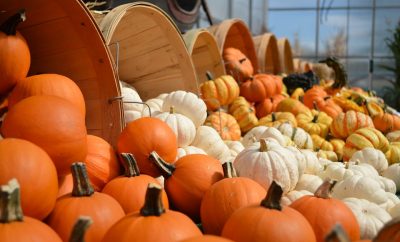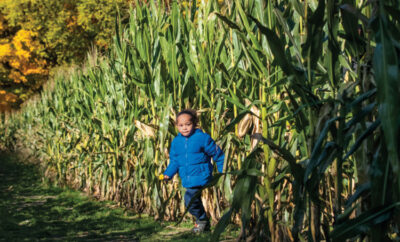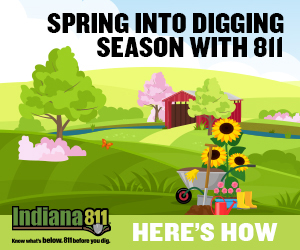Learn the Dos and Don’ts of Fall Garden Cleanup

Photo credit: iStock/suefeldberg
In fall, the tradition for gardeners has been to clean up garden beds. However, as we learn more about maintaining habitats for pollinators and other beneficial insects, many of us have put some of that fall cleanup on hold until spring.
Many beneficial insects make their winter homes right in our gardens. Some are amid the fallen leaves, and some, like native leaf-cutter bees, shelter in the hollow stems of plants. Some are burrowed below the soil surface, kept safe by a layer of leaves or mulch.
These tips will help you with a successful fall garden cleanup that also protects the environment and preps your garden for a prosperous season next year.
An Upstanding Plant
Perennials we don’t cut back provide winter food for wildlife, such as the seed heads of coneflowers and black-eyed Susans that native goldfinches like to munch on.
Whether to allow some perennials to stay upright is the biggest decision. If allowed to remain upright through winter, some will self-sow. That could mean black-eyed Susans everywhere. Unwanted seedlings will need to be dug out in spring; however, these can be shared with friends, family and neighbors.
Fall cleanup doesn’t have to be all or nothing. Cut back some perennials, especially those that were diseased, while allowing others to remain upright. Consider removing plant debris from around shrubs, but leave it in the perennial beds, or vice versa.
See more: 3 Native Shrubs to Bring a Burst of Color to Your Fall Landscape
Spring Cleaning
When spring comes, don’t be too quick to clean things up in the landscape. Bug experts, known as entomologists, say cleanup can begin when temperatures are consistently in the 50s. That’s the temp when eggs have hatched and insects begin to emerge.
It pays to BOLO (be on the lookout) when removing plant debris in spring. Keep an eye open for beetles, bees, caterpillars or pupae, and, if found, leave them where they are.
The Veggie Patch
It’s best to pull tomatoes, peppers and eggplants from the garden in the fall. This family of plants is susceptible to several disease problems, such as blight or bacteria spots. It’s best to dispose of these plants in the trash rather than a compost pile. The most efficient breakdown of insect, weeds and disease problems occurs when the compost pile’s temperature heats up to 90 to 140 degrees Fahrenheit.
Remove other annual crops. Apply chopped leaves to cover the soil to prevent erosion and add nutrients as the leaves break down. Or sow seeds for winter cover crops in the pea (legume) family. Called green manure, these crops also reduce nutrient loss, add nutrients and prevent soil erosion.
Water Well
If you’re wandering around your Indiana landscape wondering what you should do this fall, make sure trees and shrubs go into winter well-watered, especially if summer has been dry. Being well-watered for winter is critical for conifers, rhododendrons and other evergreens. Evergreen leaves and needles are exposed throughout winter and are susceptible to drying out and winter dieback.
See more: Battle of the Bulbs: Fall Planning & Planting
About the Author: Jo Ellen Meyers Sharp is a freelance writer and editor. She regularly speaks in person or virtually about gardening, plants, landscaping, sustainable practices and more. She blogs at hoosiergardener.com, where you can sign up for her free, award-winning monthly newsletter.













 My Indiana Home is produced for Indiana Farm Bureau members. Our mission is to connect you with the food you eat, the Indiana farmers who grow it and a rural lifestyle that is uniquely Hoosier.
My Indiana Home is produced for Indiana Farm Bureau members. Our mission is to connect you with the food you eat, the Indiana farmers who grow it and a rural lifestyle that is uniquely Hoosier.
Janet Mayer
January 16, 2024 at 2:51 pm
These are some awesome tips! We’re first time homeowners and we’re finally getting around to taking care of our home after a few months of heavy renovations and dumpster rentals. I didn’t know most of these things so thank you for taking some time to share them!